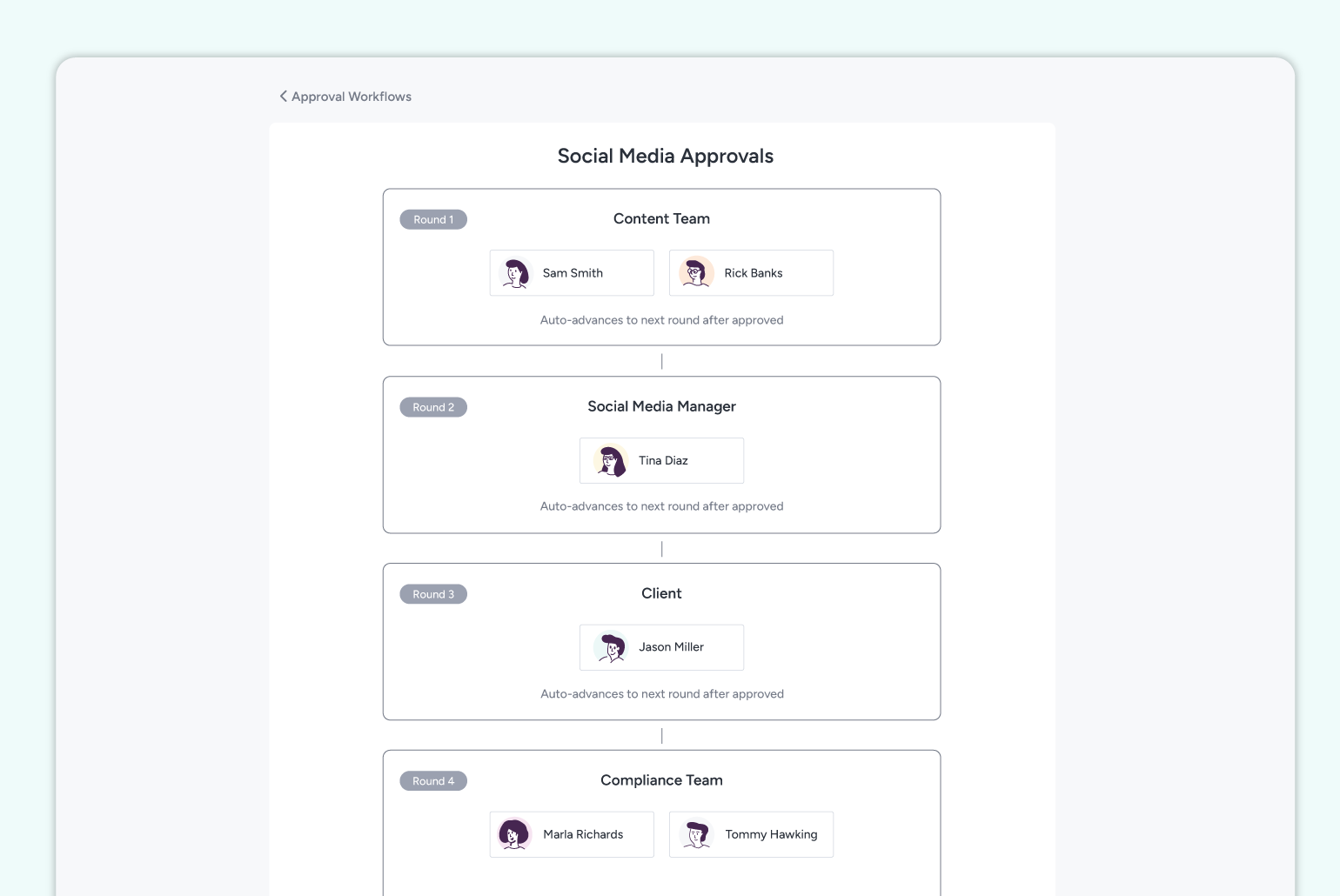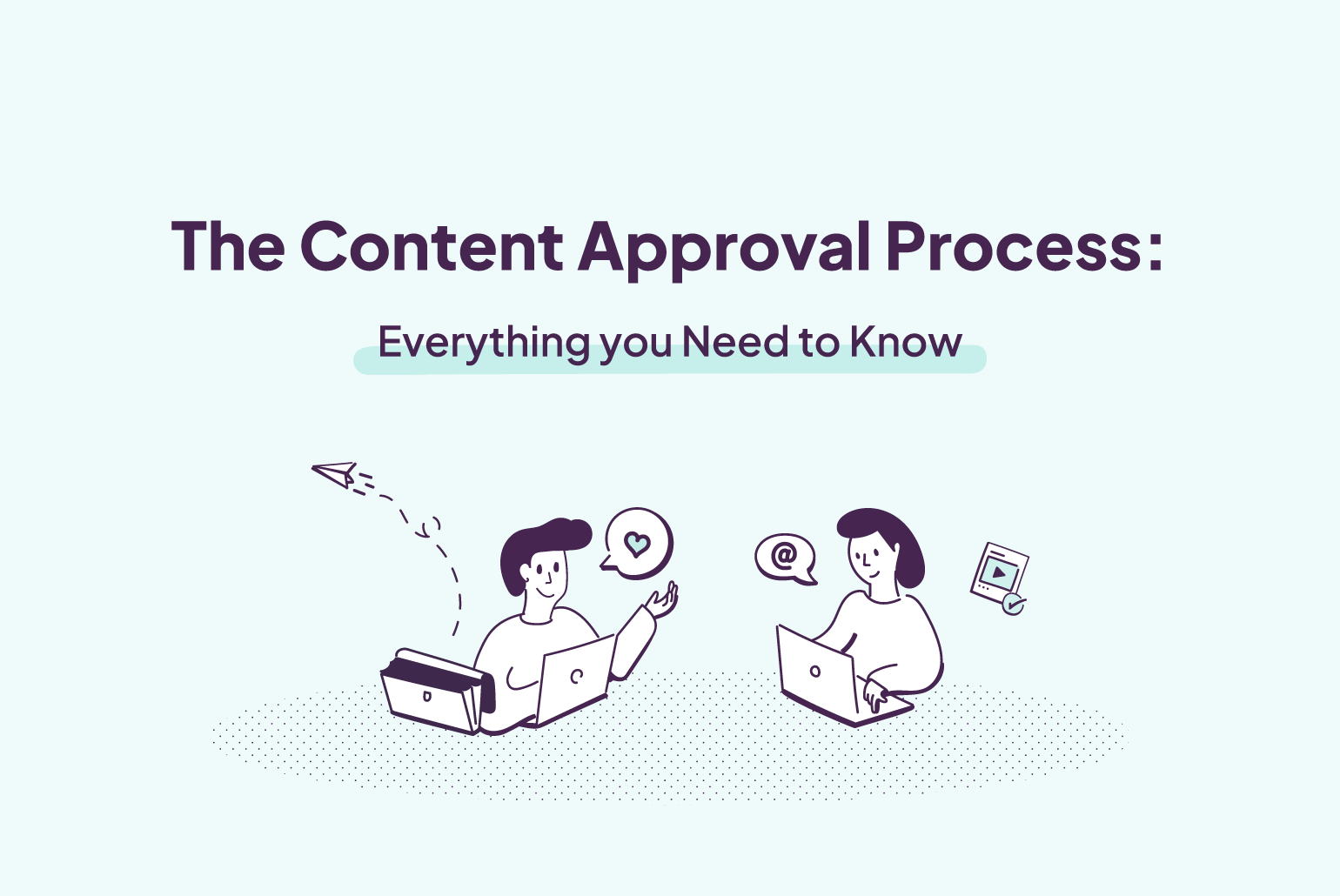You’ve got your client’s marketing content all polished up and ready to go. But before it can see the daylight, it needs to get approved. Often by multiple stakeholders.
Multiple people with multiple opinions can turn content approval into a real slog, especially if you’re relying on emails and spreadsheets. Worse, if the process drags too long, it can seriously frustrate your clients and damage your relationship with them. Ouch.
Thankfully, a marketing content approval process can help you overcome these challenges. It can save the day and spare you from endless back-and-forths, missed deadlines, and never-ending wild goose chase (aka chase of content reviewers and approvers).
So, if you’re nodding your head in agreement now, here are five reasons why your marketing team needs a content approval process and how to set one up for your team.
What is the Content Approval Process in Marketing?
Simply speaking, a content approval process is a workflow that ensures all content produced by your marketing team or agency is reviewed and approved by the necessary stakeholders before publication.
The goal is to ensure the content meets the desired quality and tone while adhering to brand guidelines and legal requirements.
5 Reasons You Need a Marketing Content Approval Process
1. Speed Up Content Production
45% of companies claim that publishing more content and increasing posting frequency are among the most effective strategies that lead to successful content marketing.
But, producing quality marketing content takes time, and content approvals can take… forever. That said, implementing a content approval process is essential for a successful content strategy.
Firstly, a structured approval process provides a clear roadmap for creating every type of content. This helps to ensure that everyone involved, from your team to your clients. And that they understand the objectives, target audience, messaging, and tone.
Secondly, a marketing content approval process helps to streamline the workflow and eliminate redundancies. When you define each stakeholder’s responsibilities and deadlines, everyone knows what is expected of them.
This clarity helps to reduce delays, resulting in a smoother and faster content launch (often ahead of time).
2. Ensure Efficient Teamwork and Collaboration With the Client
Content creation requires multiple stakeholders’ collaboration. However, without a content approval workflow, this collaboration can quickly become disorganized, with little to no correlation between team members.
Content creators, including copywriters, graphic designers, and video editors, often work independently, receiving ad hoc feedback without understanding how the final piece of content comes together. And this is even before the content reaches the client.
Equally, clients have numerous competing priorities, which creates approval delays, with a knock-on impact on the overall content creation process. A delay in one step can lead to delays in subsequent steps, ultimately impacting the project timeline and the final product’s quality.
By fine-tuning your approval process, you can ensure that everybody comes together to complete their tasks, reducing collaboration delays and keeping the content flowing, especially in remote teams that work away from the office and each other.
3. Avoid Errors and Reduce Risk
Mistakes can happen to even the most seasoned marketers. For this reason, it’s crucial to have a second set of eyes to review content. A robust internal content approval process can help catch these errors before you release content to the client.
When clients receive the content, they must approve it within the organization. The process often involves multiple people, including CMO and compliance staff. After all, every piece of content you publish must align with brand guidelines. Besides, it should be free from material that could damage the company’s reputation.
With a content approval workflow, team members can efficiently identify and correct errors or inconsistencies. The review and approval process ensures that the content meets all the requirements and adheres to the best practices.
4. Eliminate Content Approval Bottlenecks
Approval bottlenecks are a regular occurrence. They happen for multiple reasons:
- Too many or too few approvers in the process
- An excessive number of steps in the approval process
- Approvers request so many content changes that it introduces new issues
- Content gets over-edited and deviates from the primary campaign’s objectives
- Approvers leave illegible feedback, leaving editors and content creators reluctant to make changes
- Inadequate automation.
It’s quite a list, right?
While there are more potential hold-ups, it’s clear that, individually and collectively, these can cause blockage in content creation and publishing. And when you have multiple clients… You know what happens.
However, you can easily resolve these issues with a well-defined approval process. Do so by offloading unnecessary steps and ensuring the right people are involved.
Furthermore, define the level of input expected from each approver and consider automation so that no approval slips through the cracks.
5. Track Content Approval KPIs
To ensure efficient content production, it’s vital to track content approval key performance indicators (KPIs) just as you would track social media KPIs.
Start by sitting down with your team to establish the ideal KPIs for content approval internally. For example, you might decide on a target number of content pieces that an editor should approve during a normal business day or establish a deadline for responding to approval requests.
Likewise, don’t forget to involve clients in the conversation to establish ground rules that work for both parties. Discuss with the client the exact deadlines and timelines for feedback and approvals. Ask how much time they need to approve work on their end and how you can help them to manage approvals faster.
With a formalized process, everyone is held accountable and works toward meeting the established KPIs. This helps ensure that the content production process stays on track and produces high-quality results in a timely manner.
How to Create a Content Approval Process in 5 Easy Steps

1. Establish Roles and Responsibilities
To see your project through from start to finish, it’s essential to collaborate with different team members and stakeholders. Each person should clearly understand their role and responsibilities in the process.
Keep the number of involved individuals to a minimum. You should only include individuals who are required and can provide valuable contributions. By doing so, you can ensure that the project progresses smoothly and without unnecessary complications.
2. Set Criteria for Approval/Publication
To maintain a high-quality standard for your published content, establish clear criteria for what constitutes excellent content. Begin by referring to brand guidelines and content strategy, which outline your content’s tone, style, and specific requirements.
Moreover, consider any client review criteria and work collaboratively with them to establish their input at different stages of the content creation process. This could involve adding client approvals to the content conceptualization stage or seeking feedback on the copy before creating visuals.
3. Use Tools Automate to Automate Your Marketing Content Approvals
Using a specialized marketing content approval tool can simplify the process of getting your content approved with less pain. Our tool, Gain, is a perfect example of how it can help you get your content approved quickly and with minimal hassle.
With Gain, team members can easily review and provide feedback in context, making the content approval process intuitive and seamless. You can customize this process to your team’s workflow and needs, ensuring everyone is on the same page and that the content meets the necessary standards.
Plus, Gain automates many manual tasks involved in content approval, such as sending reminders and notifications to team members and approvers. This saves you time and reduces the risk of human error, ensuring that the final product is polished and error-free.
If you have a remote team, a marketing approval tool like Gain is especially valuable. Its real-time collaboration allows team members to work together on content and follow up on clients to approve it in real-time, even if they’re in different locations and time zones.
Take an interactive tour of all of Gain’s capabilities.
4. Train New Users
When new people join internally or within the client’s business, you should train them on your approval process and the automation tools you use as soon as possible. Otherwise, you risk creating another bottleneck.
5. Regularly Evaluate the Process and Make Changes
Content needs are changing rapidly, so your approval process must remain agile. Review your content approval process every 6 to 12 months with your team and clients and make adjustments as necessary.
The Bottom Line
Having a well-planned marketing content approval process lays the foundation for a triumphant marketing strategy. Don’t wait; take action now!
To learn more about how you can use Gain to automatically move content through rounds of approvals and get it published fast, request a free demo today.






